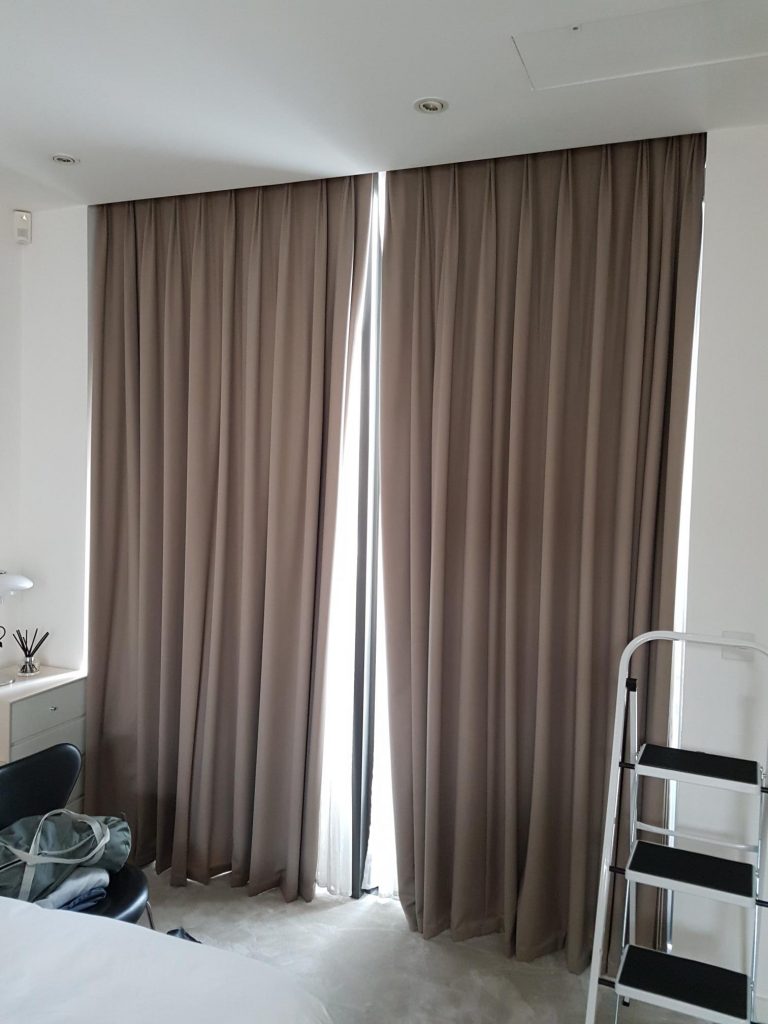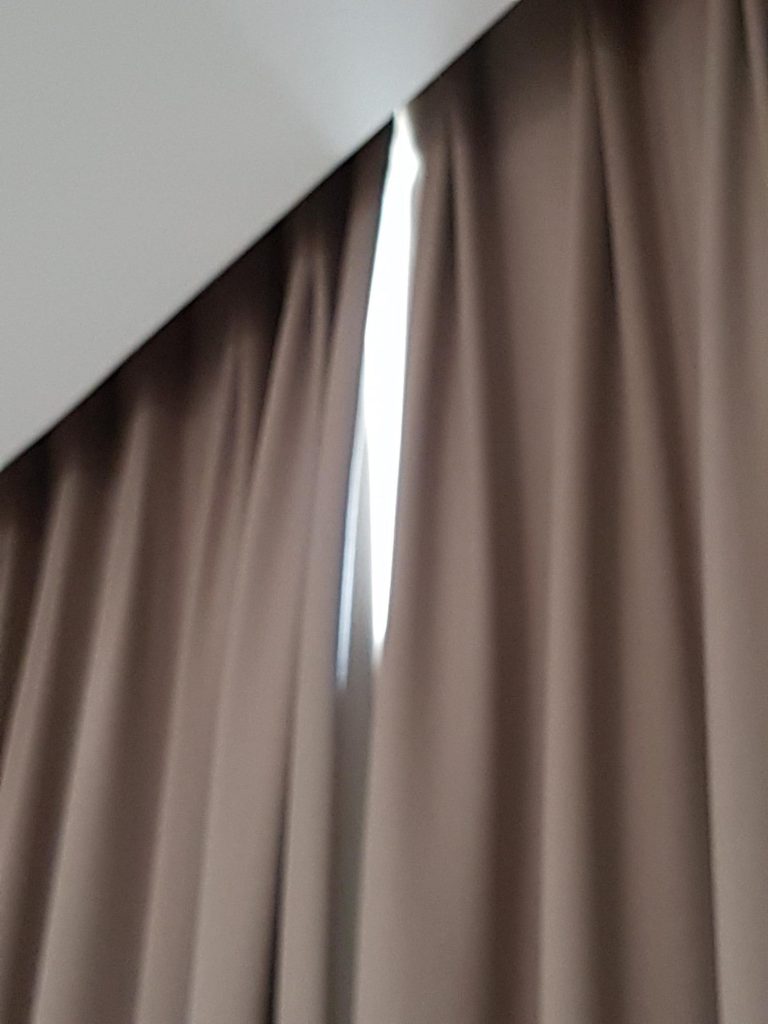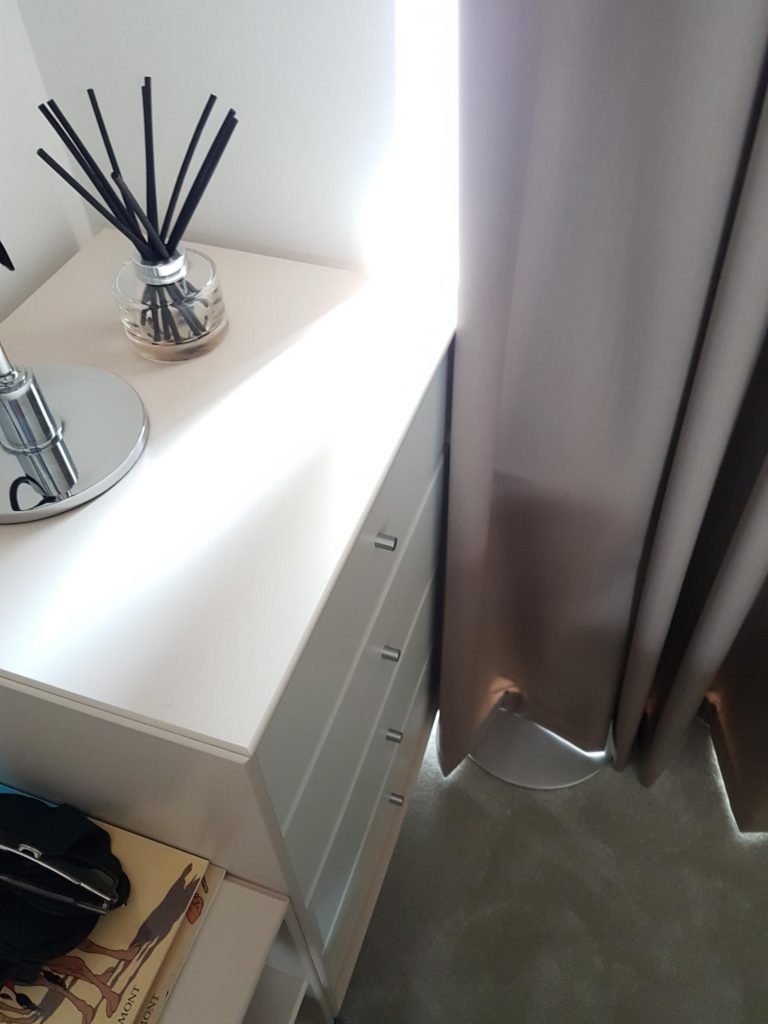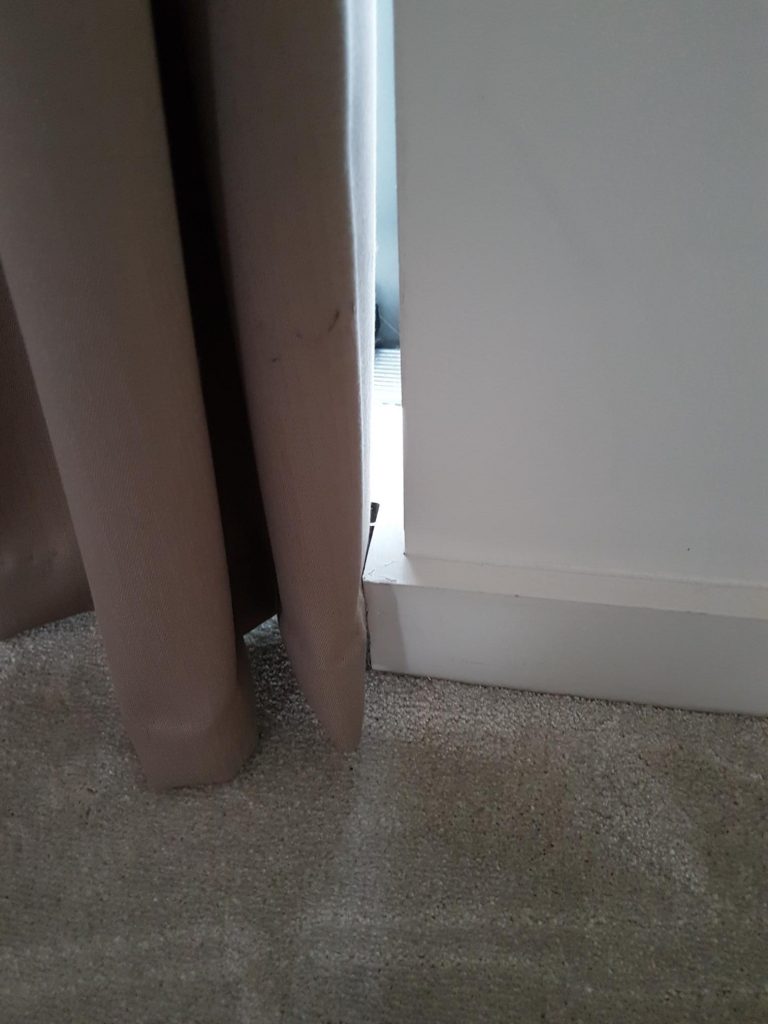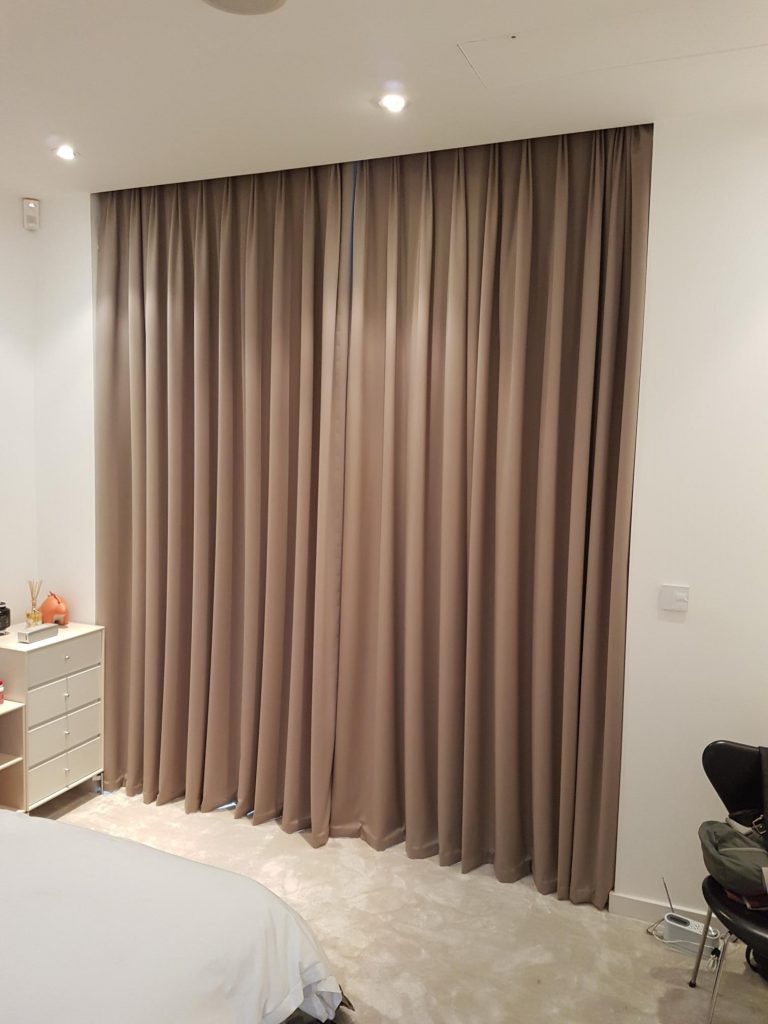The Blinds & Shutters association agreed that use of the work ‘blackout’ when referring to fabric or blinds should not be used. It’s misleading.
Blackout usual just refers to the type of fabric, not the blind or curtain. So light may not pass through the fabric but it can certainly pass around the edges, over or under the blind or curtain.
In a worst case scenario, a night shift worker (or student!) trying to sleep during the day in a south facing bedroom, will not be able to reduce the light sufficiently using a standard blackout curtain or blind.
As an example, I was recently asked to replace the curtains in the Master Bedroom of an apartment, owing to light gaps around the edges of the curtains, seen below:
As you can see, the curtains don’t close correctly in the middle, so they have to be closed by hand. This means touching the fabric by hand every day which can leave marks on the curtain fabric over time. Can you spot all of the gaps?
The overlap arm doesn’t extend beyond one side of the curtain, leaving a large light gap.
Another gap caused by the sideboard
And finally another gap created by the skirting board.
Blackout curtain solution
Replacing the curtain wasn’t going to solve the light gap issues. I replaced the curtain tracks with a battery powered Somfy curtain track with radio remote control.
This allowed me to remove the cord controls that were stopping the curtains from sitting close to the inside of the window reveal and then fit a large overlap arm, to remove the gap in the middle of the curtains.
I then used magnet to secure the curtains to the side of the window reveals (that part of the fabric never moves anyway and hey presto, here’s the result:

